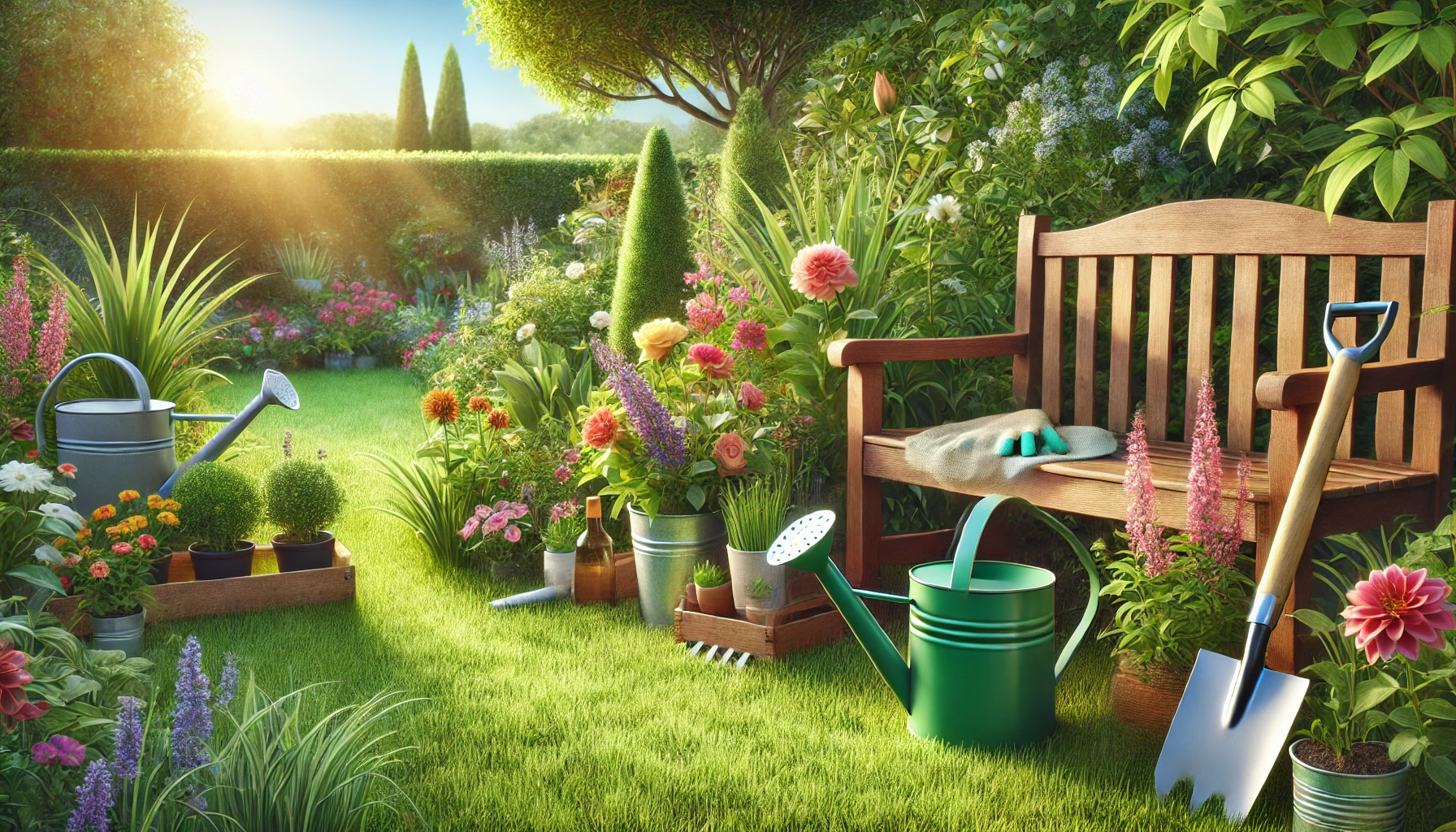Why Garden Maintenance Matters
A garden is a living, evolving space—and just like any living thing, it needs consistent care to thrive. You can have the most beautiful layout and the healthiest plants, but without proper maintenance, your garden may quickly lose its charm. A well-maintained garden not only looks lush and vibrant but also resists pests, grows more productively, and provides a relaxing environment all year round.
Let’s explore the essential maintenance routines that keep your garden green, blooming, and healthy.
1. Regular Watering: The Foundation of Healthy Growth
Water is life for plants, but knowing how much and when to water is key.
Best Practices:
- Water early in the morning or late in the afternoon to reduce evaporation.
- Deep watering is better than frequent shallow watering—it encourages strong root systems.
- Use mulch to help retain moisture and regulate soil temperature.
- Consider installing a drip irrigation system for efficiency and water conservation.
Tip: Always check the soil moisture before watering—overwatering can be as harmful as under-watering.
2. Pruning and Deadheading: Keeping Plants in Shape
Pruning is more than just cutting back; it’s about shaping the plant, promoting better airflow, and encouraging new growth.
What to prune and when:
- Remove dead, damaged, or diseased branches as soon as you see them.
- Deadhead flowers (remove spent blooms) to encourage more blossoms.
- Prune shrubs and trees in late winter or early spring to stimulate growth.
- For flowering plants, prune after the blooming cycle.
This process helps plants redirect their energy into growing new leaves and flowers instead of maintaining dead ones.
3. Mulching: A Gardener’s Secret Weapon
Mulch is a layer of material (organic or inorganic) applied to the surface of the soil.
Benefits of mulching:
- Reduces water evaporation.
- Suppresses weed growth.
- Improves soil structure and fertility (especially organic mulches like bark, compost, or straw).
- Helps regulate soil temperature.
Apply mulch around plants but leave space near the stems to prevent rot.
4. Fertilizing Wisely: Feeding Your Garden
Plants need nutrients to thrive, and sometimes the soil alone isn’t enough.
Types of Fertilizers:
- Organic options like compost, manure, and worm castings enrich the soil naturally.
- Slow-release granules provide consistent nutrition over time.
- Liquid fertilizers are fast-acting and good for quick fixes.
Tip: Always follow dosage instructions, and avoid over-fertilizing—it can burn the plants or damage the soil.
5. Weed Control: Keeping Unwanted Guests Away
Weeds compete with your plants for nutrients, water, and sunlight.
How to manage weeds:
- Pull weeds regularly by hand, especially after rain when the soil is soft.
- Use a hand hoe or weeding tool to remove deep roots.
- Apply mulch to prevent weed seeds from germinating.
- Avoid chemical weed killers in food gardens; use natural alternatives like vinegar sprays.
Consistent weeding is essential for plant health and maintaining the beauty of your garden.
6. Pest and Disease Management: Protecting Your Plants
Pests and plant diseases can destroy a garden quickly if not controlled.
Prevention and control:
- Inspect your plants regularly for signs of insects or fungal issues.
- Encourage beneficial insects like ladybugs and lacewings.
- Use neem oil, insecticidal soap, or garlic spray as natural pest deterrents.
- Ensure good airflow between plants to reduce fungal diseases.
- Remove infected leaves or plants immediately to stop the spread.
Early detection and quick action are key to keeping your garden healthy.
7. Soil Care: The Hidden Backbone of a Healthy Garden
Healthy soil equals healthy plants. Period.
How to care for your soil:
- Add compost or organic matter regularly to boost fertility.
- Avoid compacting the soil—don’t walk on garden beds.
- Rotate crops annually in veggie gardens to prevent nutrient depletion.
- Use cover crops or green manure during off-seasons to rejuvenate the soil.
Testing your soil every 1-2 years can help you understand its nutrient levels and pH balance.
8. Seasonal Clean-Up: Preparing Your Garden Year-Round
Each season brings unique challenges and opportunities.
Seasonal checklist:
- Spring: Prune, plant new seedlings, refresh mulch, and clean tools.
- Summer: Focus on watering, deadheading, and pest control.
- Autumn: Harvest, compost plant debris, and prepare for frost.
- Winter: Protect plants with coverings, prune dormant trees, and plan next year’s garden.
By adapting your maintenance to the seasons, you ensure your garden is always one step ahead.
9. Garden Tools: Maintenance for the Maintainers
Even the best gardener can’t work effectively without good tools.
Keep your tools in top shape:
- Clean them after use to prevent rust and disease spread.
- Sharpen blades regularly for clean cuts.
- Store in a dry, sheltered area.
Having the right tools—and taking care of them—makes gardening more enjoyable and efficient.
A Flourishing Garden Starts with Daily Habits
A lush, green garden doesn’t happen by accident. It’s the result of consistent care, smart decisions, and a bit of love for the plants you grow. With the right maintenance practices, you can turn any space—big or small—into a thriving, vibrant green retreat.
